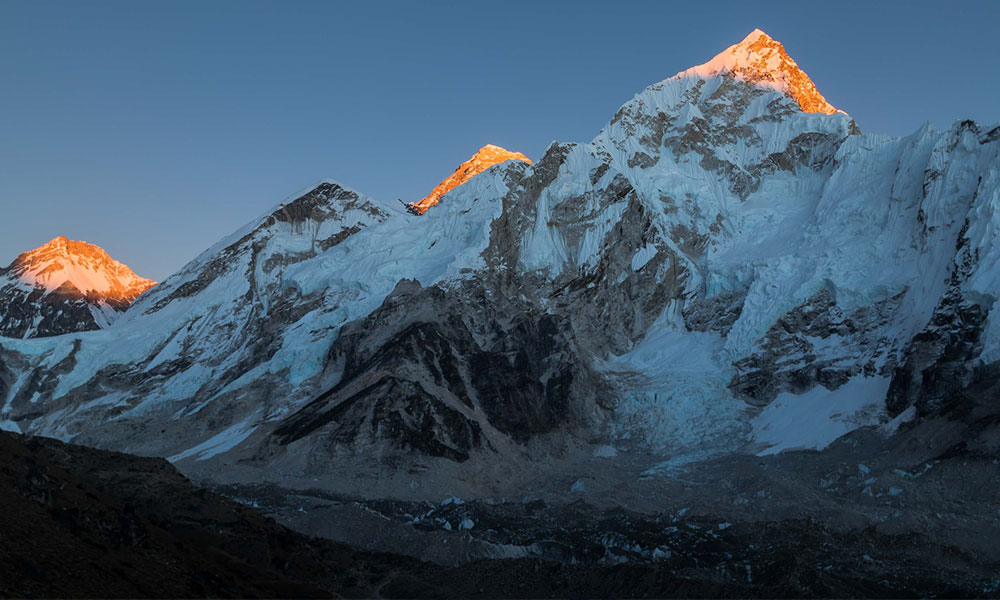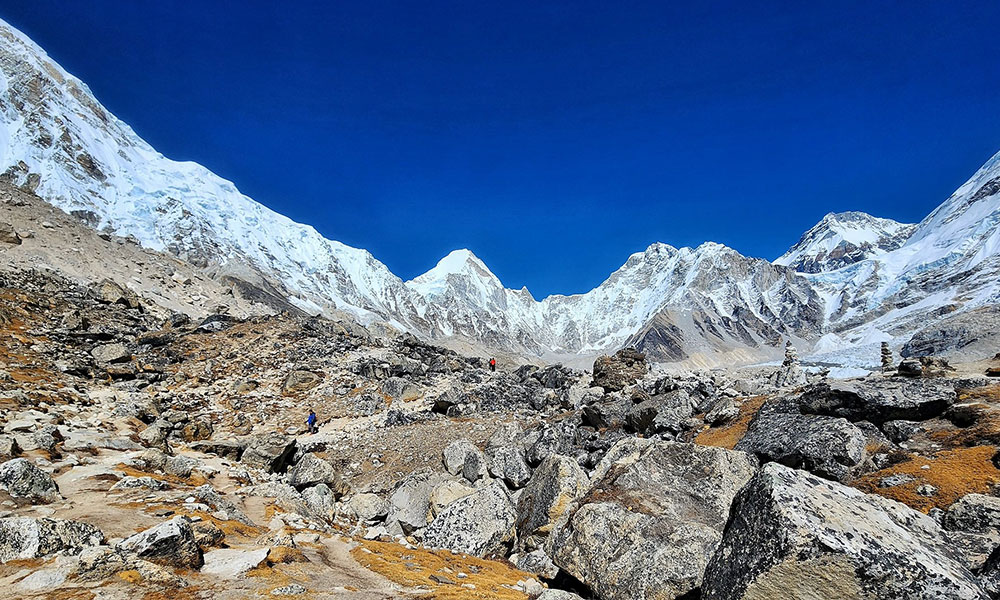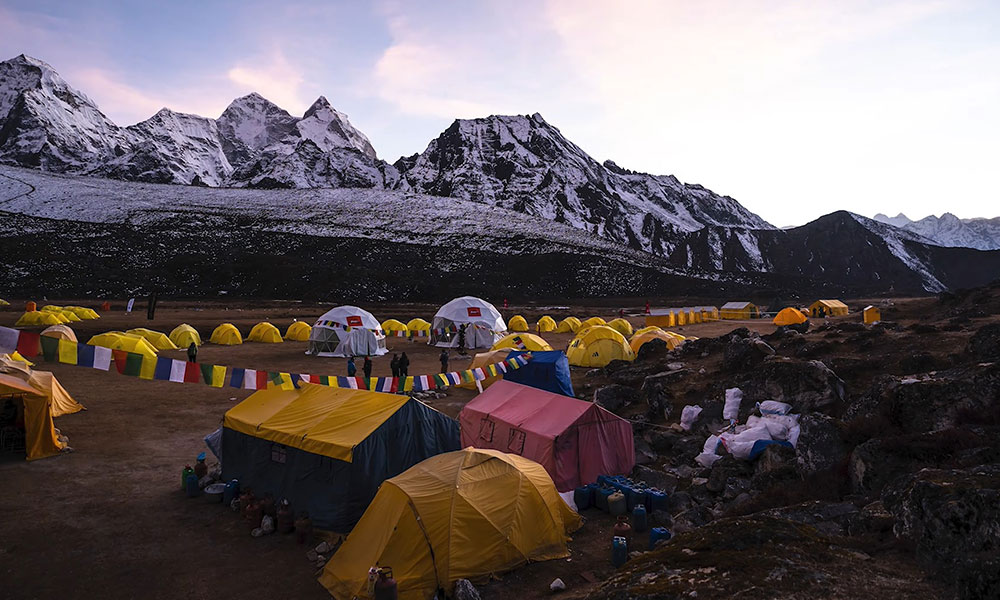Are you looking for the Everest Base Camp as your next adventure? Are you wondering if you might be able to do it or not? Eco Holidays Nepal is here with a Travel blog to help you. In this blog, you get why you failed at the Everest Base Camp Trek. So, why you might be failing at Everest Base Camp Trek? Let’s start the blog now!
Everest – the name awes as well as inspires everybody! Mount Everest(you may read our blog: where is mount everest located?) is the earth’s highest mountain above the mean sea level, in the Himalayas' Mahalangur-Himal sub-range.
Standing tall at 8,848m (29,029 ft), Everest beckons the adventurists to scale it. However, the Everest base camp trekking is Nepal's most popular trekking destination. Many people complete the trek successfully, while some people still fail. The trek is one of the most difficult ones in the world, laced with a diverse range of challenges and difficulties.
For folks who are used to trekking lengthy distances with a weighted back over the years. They may find the trekking smooth for the majority who’ve no right of entry to hills or are no longer used to trekking. You need to educate tough for this experience. I make this adventure two or three instances according to yr. Occasionally, the adventure is more difficult than others, relying on how I adapt to the absence of oxygen.
Real Adventure for the Daring Tourists

As the number of tourists has soared with each passing day, the attraction point has been Everest Base Camp. From many trekking in Nepal destinations, the Everest Base camp trek has also found a newer rhythm, and the number of trekkers increased gradually.
Nearly 30,000 travelers go to the Everest Base Camp in a year, proving the value of this trekking.
Everest Base Camp in Nepal
Before getting to the “why” of it, let us look at what Everest Base Camp is like. There are two main routes to Mount Everest- one from the North Ridge and the South Col Route. The former is on the Tibet side of the mountain and is the easier of the two.
The South Col Route is from the Nepal side and is a treacherous and hazardous route requiring a week of trekking to reach the foot of the mountain. Both these camps are at an altitude of 17,500 feet from the mean Sea level.
Challenges to Encounter

Life in these camps is not a bed of roses. Cramped for space, hard and uneven sleeping places, many new faces, all struggling and tense as a drawn string- it is no “comfort” to live in. The hardships start from here and extend to the trail.
The process of acclimatization saps your energy for sure. Weak WiFi signals, pricey subscription rates, and stale and bacteria-infested food at the eateries all add up to the woes of mountain living. Uncertain weather conditions add up to the woes further.
Now that you know what Everest Base Camp is like and what to do and not to do while on the trek let us see why the Everest Base Camp Trek success rate remains on focus.
The main reasons why you might be failing at Everest Base Camp Trek are:
Weather Conditions:
The crucial factor which accentuates the Everest Base Camp trek difficulty is the uncertain weather and extremely harsh climatic conditions. The northern hemisphere's seasonal pattern affects the weather there.
Also, chilly winds push the night temperatures below -15 degrees Celsius at the base camp.
Challenges of Altitude:

If anything, altitude sickness prevents even the most enterprising mountaineers from attempting to scale Everest. Everest base camp altitude sickness results from a decrease in the density of air and the low levels of oxygen in the air.
This causes dizziness which in turn affects both mental and physical capabilities. Common symptoms afflicting the trekkers vary from shortness of breath, nausea, headache, fever, and vomiting, which worsen with altitude.
Deaths are common results in the worst cases.
Cost and Budget:
Altitude directly impacts the budget and the Everest Base Camp trek cost. The cost of necessities like food and accommodation in Everest trekking rises directly in proportion to the altitude. These may record up to the three-fold escalation that can throw the budget haywire. The cost itself is killing-be prepared to shell out some extra cost.
Purchase of exorbitantly expensive technical clothing like down jackets, water-proofed boots, outer shells, etc., will shoot your budget off the mark. The prospect of hiring them locally is too risky to consider due to their poor quality and maintenance.
Terrain:

Well, it’s no stroll in the park! Rough, rocky, gravel-strewn, icy, and steep ups and downs- the trek tests the nerves, grit, and perseverance power.
Large piles of trash—the remnants of earlier expeditions- littered all over the place make it more horrible. People afflicted with Vertigo and Acrophobia will find it extremely challenging to negotiate the high passes and cliffs or trek the suspension bridges dangling high over the rivers. The creepy trek is too unnerving for the ordinary.
Walking or trekking through the unfriendly trail for eight to nine hours a day is a thing out of the ordinary. Rigorous pre-trek training is a must. And again, this is a costly affair, leaving you out of the day job. Aerobic exercises such as jogging, sprinting, and swimming take the breath out of your time!
Hygiene – or the lack of it!
The prospect of wearing the same clothes, and gearing up for the environment, will make the bravest wither in enthusiasm. Socks and shoes stink offensively; you end up smelling like the Yaks! Using the same towel for days is another thing you find most offensive.
Carrying more towels is a luxury in terms of weight. No proper facilities for washing and drying, making it even more exasperating. Carrying a filthy and stinking lot of clothes – a repulsive fact- is what you must live with.
Unfriendly co-trekkers:
Talking of Yaks, they are no “civil” beings to contend with! Dare to meet them across the narrow, gravel road, and you will know what we are talking about- these yaks don’t mind pushing trekkers off the edge!
Everest Base Camp Trek Reviews

Reviews are reviews. They provide the sunnier side of things, with the real issues hidden, either unanswered or sparsely addressed. The challenges are real, to be faced head-on without succor to lean on. As you ascent, the air is thin, and all your calculations and math go for a toss. You have to avoid mistakes in your movements and calculations. It is too cold to function. Soon you will be in two minds whether to finish or go back.
Everest base camp stories drive home the mantra of ‘hiking high, sleeping low.’ It is doubtlessly a daunting deal. After all the tiring trek through the day, one needs a long and sound sleep at night. That is not to be due to the harsh conditions in the camp.
Most Everest base camp tours are spread over nine days to 15 days. Gasping for breath in pins-and-needles cold, carrying oxygen on your back, roughing it out on the treacherous terrain during the day, and trying to sleep in a musty bed of little comfort will take the wind out of your sails.
Succeeding over these stumbling blocks is the key to success at the Everest Base Camp Trek adventure. It needs a lot of steely nerves and determination to fight nature and the environment to be a successful trekker on Everest. Do you have it in you? Be realistic, for a rethink after getting into the thick of it is disgraceful and demoralizing. If you'd still want to trek to the base of the world's highest point, then do visit our trekking packages specially our Short Everest Base Camp Trek package which we recommend the most as it lets you have all the thrills of the trek in relatively short amount of time.
Hope you liked our blog “Why you might be failing at Everest Base Camp Trek ?“. If you’ve any kinds of suggestions or queries related to Everest Base Camp, please feel free. You may drop your query below(in the comment section), or go through the contact us form. Thanks!!

